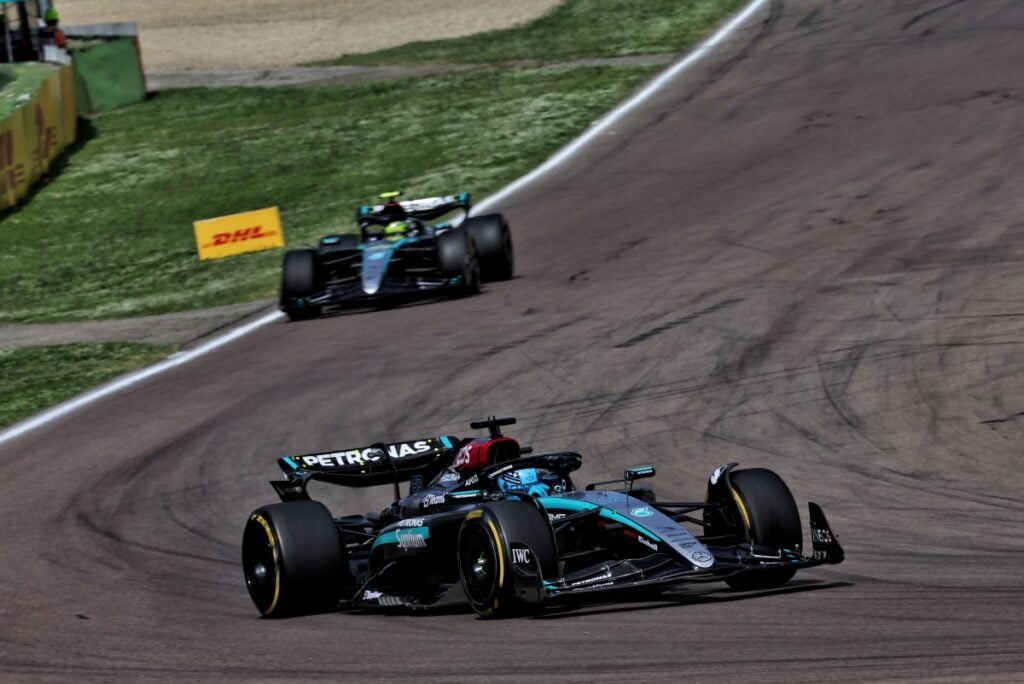Mercedes’ Bold Strategy: Can the W15 Finally Dethrone Red Bull?

Formula 1 enthusiasts, brace yourselves. Mercedes Team Principal Toto Wolff has recently opened up about the team's ambitious plans for their 2024 car, the W15, revealing a renewed hope of catching up to Red Bull under current F1 regulations. While Mercedes fans might feel skeptical due to a series of 'false dawns,' Wolff's words signal a turnaround rooted in technical precision and incremental upgrades.
Despite promising signs that Mercedes’ altered car concept had addressed former issues, the reality on circuits proved challenging. The team’s inconsistency culminated at the Imola Grand Prix, marking them as the fourth fastest team—a fact underscored by Lewis Hamilton trailing behind race winner Max Verstappen by a whopping 35 seconds. It's a stark reminder of the gap that still remains to be closed.
However, this hasn’t dampened the spirits within the Mercedes camp. George Russell shared insights on how the team has overcompensated for previous setbacks and is now better equipped to handle new challenges. According to Wolff, these modifications are not meant to be a ‘miracle update’ but are part of a journey of 'incremental gains' aimed at achieving a better balance and overall performance for the car.
Wolff highlighted, “What we see on the car now are these small gains, a tenth or a tenth and a half, but at the same time, other teams are also making progress. We are on a trajectory where we are making the car better, and we can see that.” This isn't just a matter of bringing raw speed back to the table but also about maintainable, consistent growth. The ups and downs, Wolff noted, are part of the process as long as the overall direction remains positive.
Tackling the Persistent Issues
Earlier in the season, Mercedes struggled with balancing performance across high and low-speed corners. Wolff now views this recurring problem as a positive, marking it as a crucial learning point. “We never had such clear indications like we've had in the last few races. The car was either really fast in high-speed corners or low-speed ones, but never both. Now, we're slowly dialing that out,” he commented.

Admitting to past “false dawns,” Wolff remains optimistic that this time around, the team has built a ‘stable platform.’ This stability is essential for knowing the right development path and eliminating the zig-zagging that has plagued previous seasons. “But I think there is a fundamental thing that we haven’t spotted when we should have, that’s why there’s more confidence at the moment,” Wolff stated, though he admitted the sporting world holds no guarantees.
A New Focus: Aero Efficiency
Perhaps the most compelling reason to believe in Mercedes' resurgence lies in their newfound aerodynamic strategy. Asked if the team now has the foundation to compete with Red Bull in terms of aero performance, Wolff’s answer was confident: “Yeah, it does. The car's basis is more conventional, defining where we want downforce and how to generate aero efficiency. We pretty much know where this is going, and this is the advantage compared to the last two years.”
This rebuilt foundation allows Mercedes to shift focus from endless troubleshooting to actual performance enhancement. By defining precise zones for downforce optimization and overall aero efficiency, they can capitalize on each racing event with a stronger, more resilient car.
As we look forward, the question remains: Can the W15 finally dethrone Red Bull? With a renewed focus on steady gains and aero efficiency, Mercedes certainly seems to have the architecture required for a comeback. However, only time and tracks will reveal whether these strategic moves will bring them back to the top.